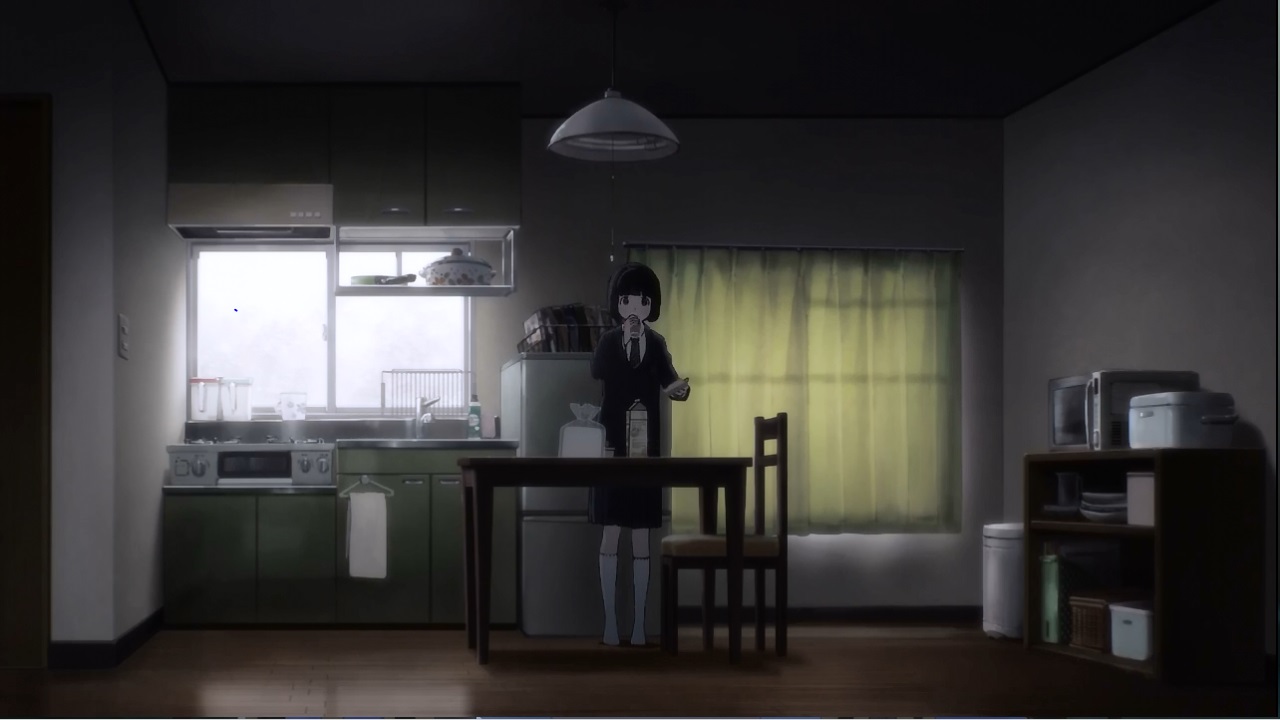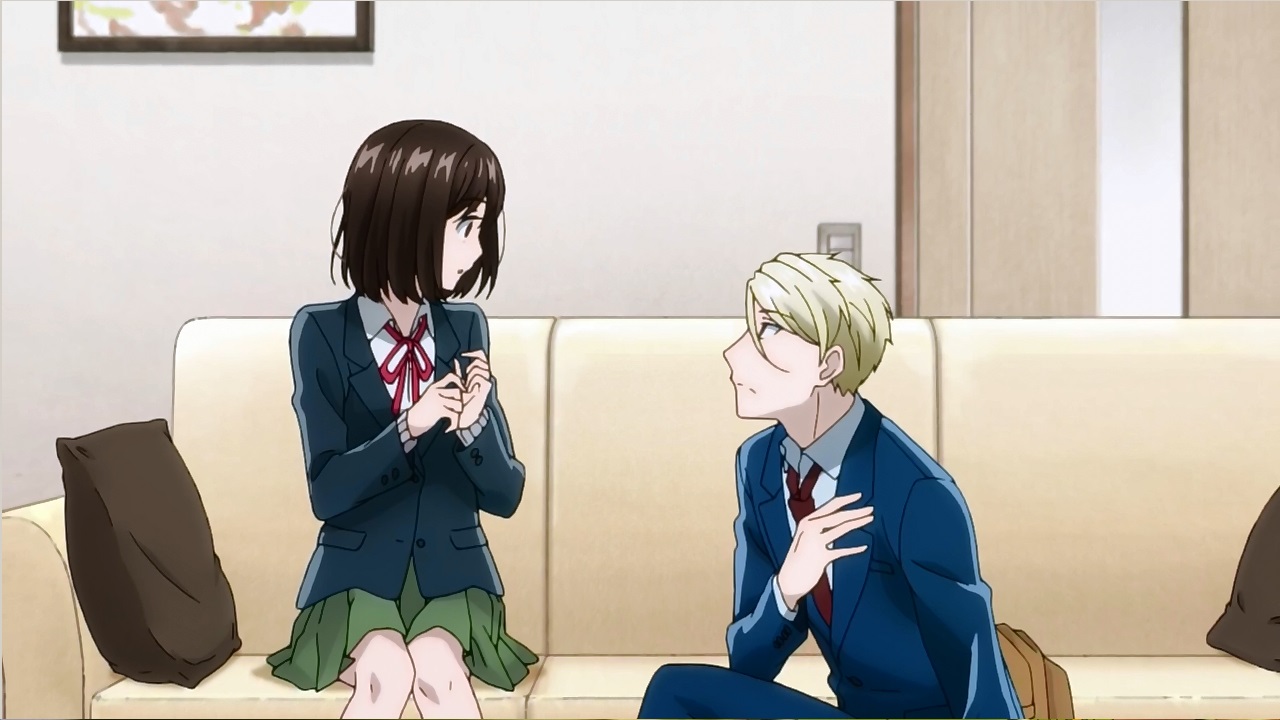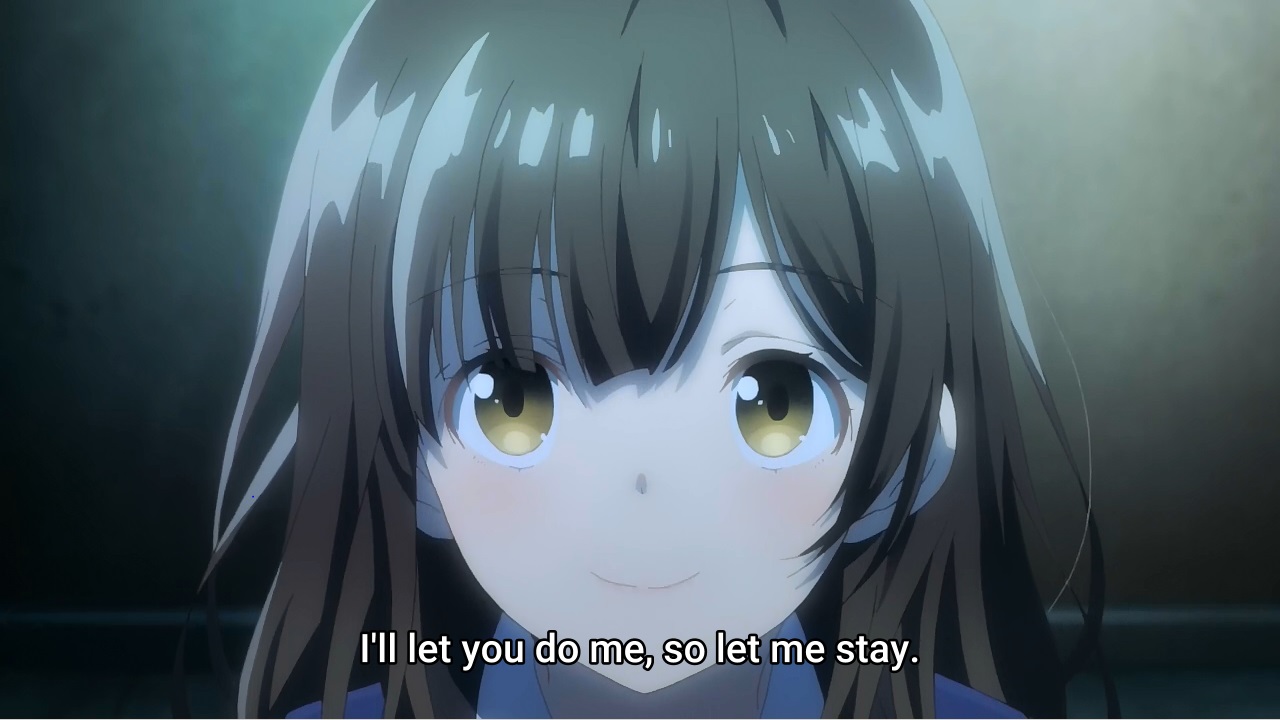The sheer audacity to start your new anime series with over three minutes of no dialogue, no plot, no story made me fall in love with Super Cub the same way the opening minutes of Wonder Egg Priority did last season.
It’s early morning and we’re in Hinoharu train station on the outskirts of Hokuto City –west of Tokyo, south east of Nagano–, with only bird song audible. As a train arrives, we move out from the station and see how rural the setting already is. Light classical music starts playing as we move away through the town towards a small nondescript apartment building at the out-most edge of town, taking a full minute to get there. We don’t know it yet, but this mirrors the daily commute of our protagonist to her school, during which she will tells us that the road to school has a bit of an incline near the station, as we see her struggling to get up the hill. She’ll also tell us that she doesn’t parents, friends or hobbies. For the moment though we don’t even know she exists, as we make our journey through her town.
This is what Scott McCloud, in Understanding Comics called an aspect to aspect transition: “(it) bypasses time for the most part and sets a wandering eye on different aspects of a place, idea or mood”. In anime this sort of transitions are often done the way they are done here, by showing a series of essentially static (landscape) shots, the camera travelling through them, but with little no motion visible, nor people. It’s a way of slowing the viewer down and is most often found in socalled iyashikei, or ‘healing’ anime. Landscape and setting before plot or characters.
The first shot inside the apartment is a classic Japanese ceiling light, ugly and cheap. The apartment is in shadow, no light visible, the walls and ceiling beige and slightly grungy. There is morning light coming in from the kitchen window. The kitchen itself is as utilitarian as the ceiling light: two gas hops, a sink and a fridge, with stainless steel racks hanging from the ceiling with a few cooking pans. The camera turns and shows a microwave and rice cooker on a side table, with the dining table visible in the foreground. The camera moves on to a set of light blue curtains through which a bit of light is showing. School books on a desk are shown as we hear an alarm clock going off. The alarm clock is shown on a bed side table, with a hand coming into frame to shut it off. As it’s stopped, the music stops as well.
Again, an aspect to aspect transition, giving us an impression of the place our protagonist lives in. It’s shabby, it’s small, with few amenities and no visible luxuries. The only real spot of colour in the whole apartment are the school books. The lightning is natural, subdued and of a quality we seldom see in anime. The detail and care with which the flat is rendered lends it a kind of beauty. These shots reveal a bit of the character that inhabits the apartment. Poor, but tidy, with everything in its place, no clutter, an ordered existence.
As our protagonist wakes up –who as of yet has no name– we follow her through her morning routine. We get a glimpse of her as she sits up in bed, then see a badroom door with the sound of a running shower. A glass is put down on table and juice poured in. A piece of bread is smeared with what looks like butter. Finally, a middle distance shot that shows a girl dressed in a school uniform, standing behind a small dining table, with only one chair. It’s the first shot both of our protagonist and her apartment, showing clearly that his is indeed very small, with the kitchen, living room and even the bedroom being all in one room, only the bathroom separate. When the fridge is opened to take out a jar of tea, you can see the light blue curtains that hang next to the bed in the background.

Everything in not just the apartment, but also our protagonist’s routine, is utilitarian, sparse, simple, perhaps out of necessity, perhaps out of character, perhaps both. Her lunch is a simple bento of plain rice, a jar of tea and some sort of instant snack yto go with it. The way she efficiently puts together her lunch and puts it in her school bag shows how routine this is, that she has had to do this for herself for a long time. No elaborate side dishes here, because why would you if you’re just doing it for yourself. She makes her lunch because she has to eat something, not to show off. That is reserved for the animation itself: I could Feel that extra hard twist at the end as she screwed on the lid on her thermos flask. The animation is as understated as the rest of the episode, but simple little things as the way with which she scopes up rice is animated show a quiet competence, an eye for detail again.
Skipping ahead, some seven and a half minutes into the episode, is when everything changes. Seeing it in isolation like this, it’s an obvious trick, especially with that one music note to underscore it. When I was watching it last night though, I knew something had changed, but it registrered more subconsciously than consciously. The story had me fully entranced, all thanks to the confidence with which the animation told it. With a lot of series, we would’ve had flashbacks, or prologues establishing why our protagonist lives her life the way she does. Here we get one small internal monologue as our protagonist cycles to school, laments the incline leading up to it and matter of factly states that she has no parents, hobbies, friends or goals. Even the manga version had the obligatory scene establishing why she had no parents; the anime trusts the viewer to draw their own conclusions. We never even learn her name except that she has to fill it out on the receipt when she finally buys her Super Cub. It takes the original story and parses it down to tell it as economically as possible. The squashed, flattened aspect of the animation fits the squashed, flattened character of the protagonist. The fun is in imagining how the series will evolve from here, as she starts to develop and grow.


